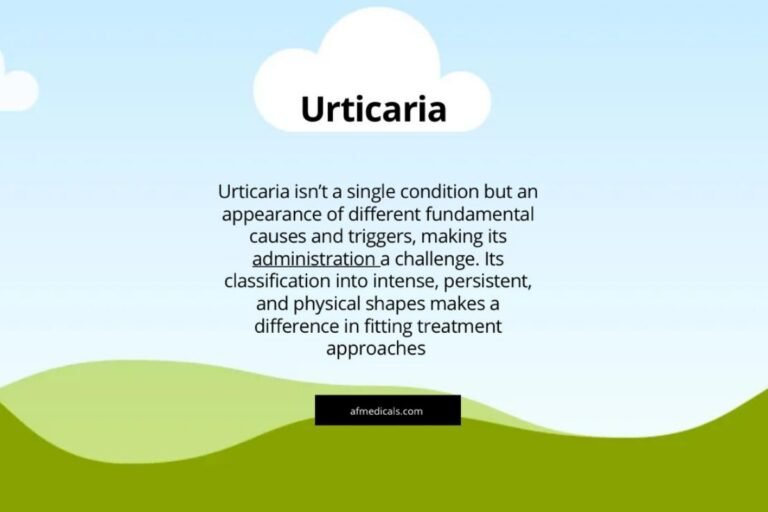Cerebral paralysis: Symptoms, Causes, Treatment and its Risk Factors:
Cerebral paralysis: Symptoms, Causes, Treatment and its Risk Factors:
Overview
Cerebral paralysis may be a group of conditions that influence development and pose. It’s caused by harm that happens to the developing brain, most regularly some time after birth.
Side effects show up in the earliest stages of preschool for a long time and shift from exceptionally mellow to genuine. Children with cerebral paralysis may have overstated reflexes. The arms, legs, and trunk may show up floppy. Or they may have solid muscles, known as spasticity. Indications too can incorporate sporadic poses, developments that can’t be controlled, a walk that’s not unfaltering, or a few combinations of these.
Cerebral paralysis may make it difficult to swallow. It too can cause eye muscle awkwardness, in which the eyes do not center on the same question. Individuals with the condition might have decreased range of movement in their joints due to muscle solidity.
The cause of cerebral paralysis and its impact on work shift from individual to individual. A few individuals with cerebral paralysis can walk, whereas others require help. Some people have mental inabilities, but others don’t. Epilepsy, visual deficiency, or deafness, moreover, might influence a few individuals with cerebral paralysis. There’s no remedy, but medications can offer assistance. The indications of cerebral paralysis may change amid the child’s advancement, but the condition doesn’t get worse. The condition, by and large, remains the same over time.
Symptoms
The side effects of cerebral paralysis can shift incredibly. In a few individuals, cerebral paralysis affects the whole body. In other individuals, indications might influence one or two appendages or one side of the body. Common side effects incorporate inconvenience with development and coordination, discourse and eating, improvement, and other issues.
Movement and coordination
Movement and coordination symptoms may include:
- Stiff muscles and exaggerated reflexes, known as spasticity. This is the most common movement condition related to cerebral palsy.
- Variations in muscle tone, such as being either too stiff or too floppy.
- Stiff muscles with regular reflexes, known as rigidity.
- Lack of balance and muscle coordination, known as ataxia.
- Jerky movements that can’t be controlled, known as tremors.
- Slow, writhing movements.
- Favoring one side of the body, such as only reaching with one hand or dragging a leg while crawling.
- Trouble walking. People with cerebral palsy may walk on their toes or crouch down when they walk. They also may have a scissors-like walk with their knees crossing. Or they may have a wide gait or a walk that’s not steady.
- Trouble with fine motor skills, such as buttoning clothes or picking up utensils.
Speech and eating
These symptoms related to speech and eating may occur:
- Delays in speech development.
- Trouble speaking.
- Trouble with sucking, chewing or eating.
- Drooling or trouble with swallowing.
Development
Some children with cerebral palsy have these symptoms related to development:
- Delays in reaching motor skills milestones, such as sitting up or crawling.
- Learning disabilities.
- Intellectual disabilities.
- Delayed growth, resulting in smaller size than would be expected.
Other symptoms
Damage to the brain can contribute to other neurological symptoms, such as:
- Seizures, which are symptoms of epilepsy. Children with cerebral palsy may be diagnosed with epilepsy.
- Trouble hearing.
- Trouble with vision and changes in eye movements.
- Pain or trouble feeling sensations such as touch.
- Bladder and bowel issues, including constipation and urinary incontinence.
- Mental health conditions, such as emotional conditions and behavior issues.
The brain condition causing cerebral paralysis doesn’t alter with time. Indications, as a rule, do not decline with age. Be that as it may, as the child gets more seasoned, a few indications might become more or less clear. And muscle shortening and muscle unbending can decline on the off chance that they are not treated forcefully.
When to see a doctor
Contact your child’s wellbeing care proficient and get a prompt determination in case your child has indications of a developmental condition. You should see a wellbeing expert in case your child has delays in improvement.
Seek your child’s wellbeing care proficiently on the off chance that you have concerns around scenes of misfortune of mindfulness or of sporadic real developments or poses. It’s also vital to contact your child’s wellbeing care proficient on the off chance that your child has inconvenience gulping, destitute coordination, eye muscle awkwardness, or other formative issues.
Causes
Cerebral paralysis is caused by unpredictable brain advancement or harm to the developing brain. This, as a rule, happens some time after a child is born, but it can happen at birth or in the early stages. Frequently, the cause isn’t known. Numerous components can lead to changes in brain function. A few incorporate:
- Gene changes that result in genetic conditions or differences in brain development.
- Maternal infections that affect an unborn baby.
- Stroke, which interrupts blood supply to the developing brain.
- Bleeding into the brain in the womb or as a newborn.
- Infant infections that cause swelling in or around the brain.
- Traumatic head injury to an infant, such as from a motor vehicle accident, fall or physical trauma.
- Lack of oxygen to the brain related to a hard labor or delivery, although this cause is less common than previously thought.
Risk factors
A number of factors are associated with an increased risk of cerebral palsy.
Maternal health
Certain contaminations or harmful exposures during pregnancy can altogether increase the cerebral paralysis hazard for the child. Irritation activated by contamination or fever can harm the unborn baby’s developing brain.
- Cytomegalovirus. This common infection causes flu-like symptoms. In the event that a mother has to begin with a dynamic disease during pregnancy, it can lead to birth abandonment.
- German measles, known as rubella. This viral infection can be prevented with a vaccine.
- Herpes. This disease can be passed from mother to child during pregnancy, influencing the womb and placenta.
- Syphilis. This is a bacterial infection that’s usually spread by sexual contact.
- Toxoplasmosis. This contamination is caused by a parasite found in sullied nourishment, soil, and the feces of tainted cats.
- Zika virus infection. This contamination is spread through mosquito chomps and can influence the brain development of an unborn infant.
- Intrauterine infections. This includes infections of the placenta or fetal membranes.
- Exposure to toxins. One example is exposure to methyl mercury.
- Other conditions. Other conditions influencing the mother that can marginally increase the chance of cerebral paralysis include thyroid conditions, preeclampsia, or seizures.
Infant illness
Illnesses in a newborn baby that can greatly increase the risk of cerebral palsy include:
- Bacterial meningitis. This bacterial disease causes swelling within the layers encompassing the brain and spinal cord.
- Viral encephalitis. This viral contamination also causes swelling within the layers encompassing the brain and spinal line.
- Severe or untreated jaundice. Jaundice shows up as a yellowing of the skin and eyes. The condition happens when certain byproducts of “utilized” blood cells aren’t sifted from the circulation system.
- Bleeding into the brain. This condition is commonly caused by the child having a stroke within the womb or in the early stages.
Factors of pregnancy and birth
The potential commitment from each is obliged, but these pregnancy and birth components may increase the danger of cerebral loss of motion.
- Low birth weight. Babies who weigh less than 5.5 pounds (2.5 kilograms) are at higher risk of developing cerebral paralysis. This hazard increases as birth weight drops.
- Multiple babies. Cerebral paralysis chances increase with the number of babies sharing the uterus. The hazard, moreover, can be related to the probability of untimely birth and moo birth weight. In the event that one or more of the babies pass on, the survivors’ chance of cerebral paralysis increases.
- Premature birth. Babies born rashly are at higher risk of cerebral paralysis. The earlier a child is born, the more prominent the cerebral paralysis hazard.
- Delivery complications. Occasions amid labor and conveyance may increase the hazard of cerebral paralysis.
Complications
Muscle shortcoming, muscle spasticity, and inconvenience with coordination can contribute to complications in childhood or in adulthood, counting:
- Contracture. Contracture is muscle tissue shortening due to extreme muscle fixing. This will be the result of spasticity. Contracture can moderate bone development, cause bones to twist, and result in joint changes, disengagement, or fractional separation. These can incorporate a separated hip, a bended spine, or other bone changes.
- Malnutrition. Inconvenience with gulping and nourishing can make it difficult to urge sufficient nutrition, particularly for a newborn child. This will disable development and weaken bones. A few children or adults require a nourishing tube to provide sufficient sustenance.
- Mental health conditions. Individuals with cerebral paralysis might have mental health conditions, such as discouragement. Social confinement and the challenges of adapting to inabilities can contribute to sadness. Behavior issues, too, can happen.
- Heart and lung disease. Individuals with cerebral paralysis may develop heart disease, lung illness, and breathing conditions. Inconvenience gulping can result in respiratory issues, such as desire pneumonia. Desire pneumonia happens when a child breathes in nourishment, drinks, spits, or upchucks into the lungs.
- Osteoarthritis. Weight on joints or misalignment of joints from muscle spasticity may lead to this excruciating bone infection.
- Osteoporosis. Breaks due to moo bone thickness can result from a need for versatility, destitute nourishment, and anti-seizure drugs.
- Other complications. These can incorporate rest conditions, incessant torment, skin breakdown, intestinal issues, and issues with verbal wellbeing.
Prevention
Regularly, cerebral paralysis can’t be avoided, but you’ll be able to decrease the dangers. On the off chance that you’re pregnant or arranging to become pregnant, take these steps to play down pregnancy complications:
- Make sure you’re vaccinated. Getting inoculated against infections such as rubella might anticipate contamination. It’s best to form beyond any doubt that you’ve been completely inoculated some time ago after getting pregnant.
- Take care of yourself. The more beneficial you’re heading into a pregnancy, the less likely you will be to create contamination that comes about in cerebral paralysis.
- Seek early and continuous prenatal care. Seek your wellbeing care proficiently frequently during pregnancy. Legitimate prenatal care can decrease the health dangers to you and your unborn child. Seeing your wellbeing care proficient frequently can offer assistance in anticipating untimely birth, low birth weight, and diseases.
- Avoid alcohol, tobacco and illegal drugs. These have been connected to cerebral paralysis hazard.
Sometimes, cerebral palsy can happen when a child’s brain gets hurt. Be careful and stay safe in general. Keep your child safe from head injuries by using a car seat, bicycle helmet, safety rails on the bed, and watching them closely.




